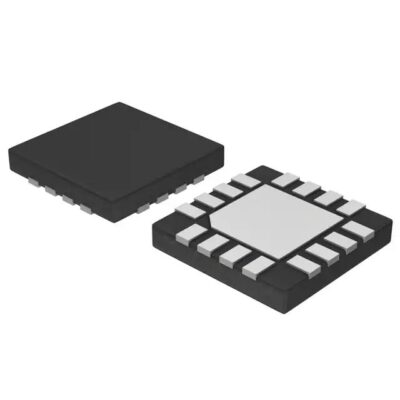NB7NPQ7022MMUTXG
Part Number: NB7NPQ7022MMUTXG
Manufacturer: ONSEMI
Description: IC REDRIVER 2-PORT 16UQFN
Shipped from: Shenzhen/HK Warehouse
Stock Available: Check with us
ICRFQ.com - Electronic Components Distributor in China Since 2003

Part Number: NB7NPQ7022MMUTXG
Manufacturer: ONSEMI
Description: IC REDRIVER 2-PORT 16UQFN
Shipped from: Shenzhen/HK Warehouse
Stock Available: Check with us
The NB7NPQ7022M is a driver for applications that enable data transfer rates of both 5 Gbps and 10 Gbps and is compatible with the USB 3.1 Gen 1 and USB 3.1 Gen 2 standards. It contains two channels, each having a high gain and requiring 3.3 volts to function. PCB traces, transmission cables, and inter-symbol interference is three factors that degrade the signal’s overall quality (ISI). The NB7NPQ7022M can fix this problem by employing input receiver variable equalization levels and output transmitter flat gain amplification. These features are designed to compensate for the losses that were previously described. The Flat Gain and the Equalization can be adjusted using the four-level control pins. Each channel has its own set of control pins so that the signal can be optimized individually. The TX output for the receiver connection is periodically checked following the first time the device is powered on. Once it is known where the receiver is, the R.X. termination switch is turned on, and the system is prepared to carry out the driver function.
It is essential to notice that the two channels are entirely distinct. The NB7NPQ7022M has been engineered to perform reliably in temperatures ranging from –40 degrees Celsius to 85 degrees Celsius, typical in commercial and industrial environments. It comes in a small UQFN16 container that measures 3 millimeters on each side.
As a requirement for passing the USB 3.1 compliance test, the host or the peripheral device must send out an LFPS signal compliant with the specification’s parameters. The USB compliance of the NB7NPQ7022M is verified by testing it as part of a system that complies with USB standards. This helps ensure that the NB7NPQ7022M maintains compliance while improving system performance.
To accomplish features such as entering low-power modes, performing warm resets, and providing connection training between host devices and peripheral devices, USB 3.1, Gen1, and Gen2 use the Low-Frequency Periodic Signaling (LFPS) protocol. The LFPS signaling protocol utilizes bursts of frequencies that can range anywhere from 10 to 50 MHz and can have predetermined burst lengths or repeat rates. These bursts are also capable of being repeated at specialized rates.
The USBIF certification process includes an evaluation of the system, including a phase known as the transmitter compliance phase. During this phase, the system is required to broadcast specific compliance patterns. For the receiver to switch between these patterns for the various tests, it must first receive a signal that contains a ping or LFPS. This signal may originate from the test suite itself or a pattern generator independent of the suite. The standard signal comprises a single burst with a duration of 100 ns and a frequency of 20 MHz.
The control pins labeled CTRL A1 and CTRL B0 are responsible for altering the flat gain. In contrast, the control pins labeled CTRL A0 and CTRL B1 are responsible for modifying the Equalization of channels A and B, respectively. Changing the Float (Default) Setting to “F” is feasible by permitting the control pins to continue to float in their respective positions. The driver will use a pull-up resistor with a value of 100 k and a pull-down resistor with a value of 200 k to internally bias the control pins to the required voltage, equal to Logic 2/3 times VCC. These two resistors are located inside the device themselves. Pull the control pin down until it contacts the ground to switch to the “L” setting for low. The high level, indicated by the letter “H,” can be set by removing the high-connected pin to VCC. To change the value of Rext, connect a resistor with a 68 k between the control pin and the ground. This will allow you to move the slider. Consequently, the driver’s internal voltage will be biased to be Logic 1/3 times the value of VCC.
Because it offers linear Equalization, the NB7NPQ7022M can compensate for losses that occur along board traces and cable lines due to the natural occurrence of these losses. By linearly amplifying both high and low frequencies, linear equalization ensures that the voltage amplitude remains constant regardless of the transmitted frequency. This compensation electrically counteracts losses and makes it possible to route longer traces than would otherwise be possible.
DC flat gain boosts signals of both high and low frequencies equally, making it an essential component for compensating for losses at low frequencies. Simulating a higher input signal from a USB Controller can also be accomplished with the help of D.C. flat gain. If a USB controller can only supply an 800 mV differential to a receiver, then using 3 dB of flat gain will increase it to 1130 mV.
It is crucial to ensure that the total voltage does not exceed 1200 mV when using Flat Gain with Equalization in a USB application. Combining the E.Q. gain and the Flat Gain can determine the entire gain.
Are you interested in learning more about the NB7NPQ7022MMUTXG, or are you ready to order one? Make sure to get in touch with ICRFQ, as this is the greatest site to find electronic components made in China. We will spare no effort to ensure you are provided with the finest goods at the most competitive cost.
WhatsApp us